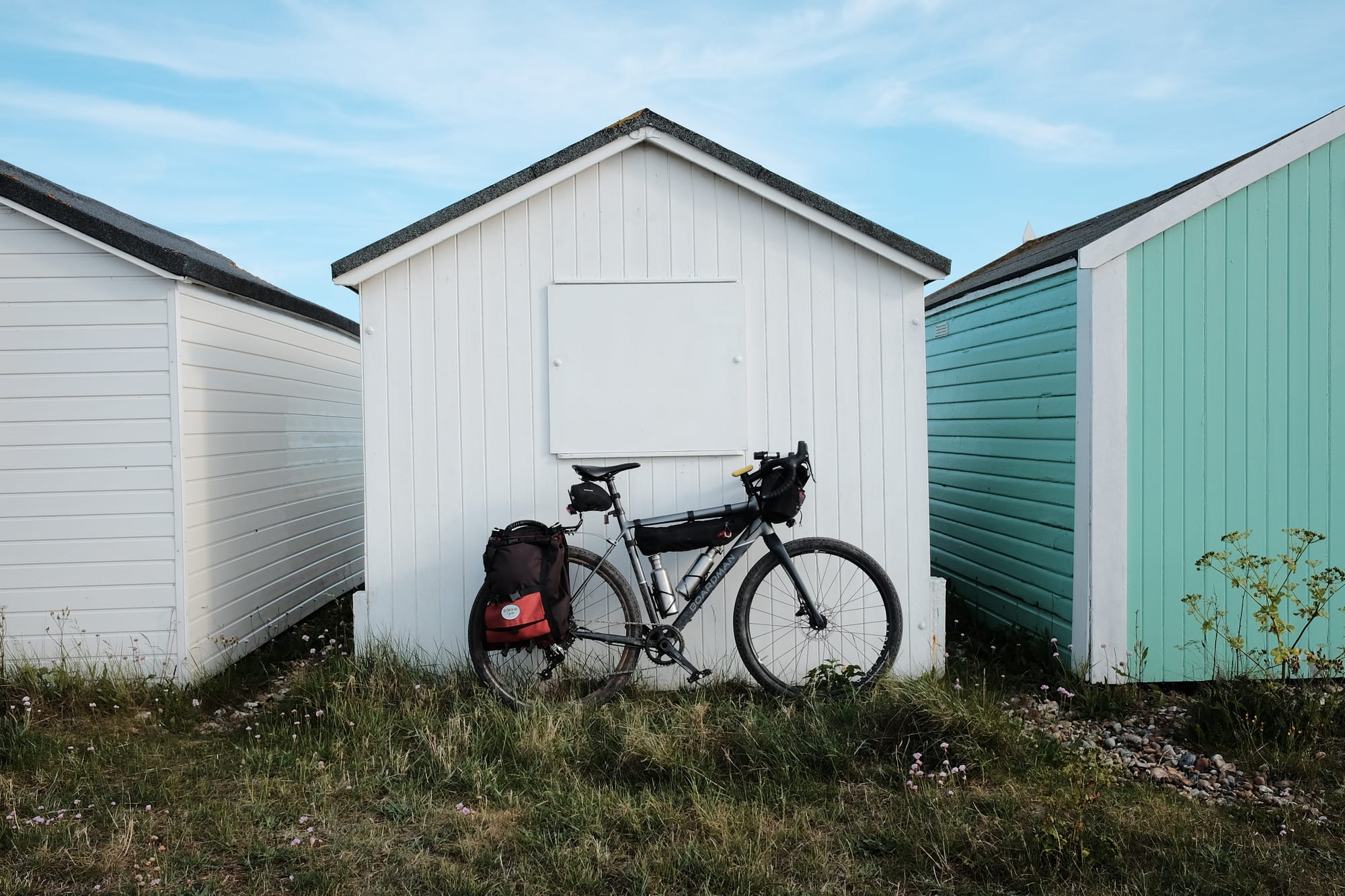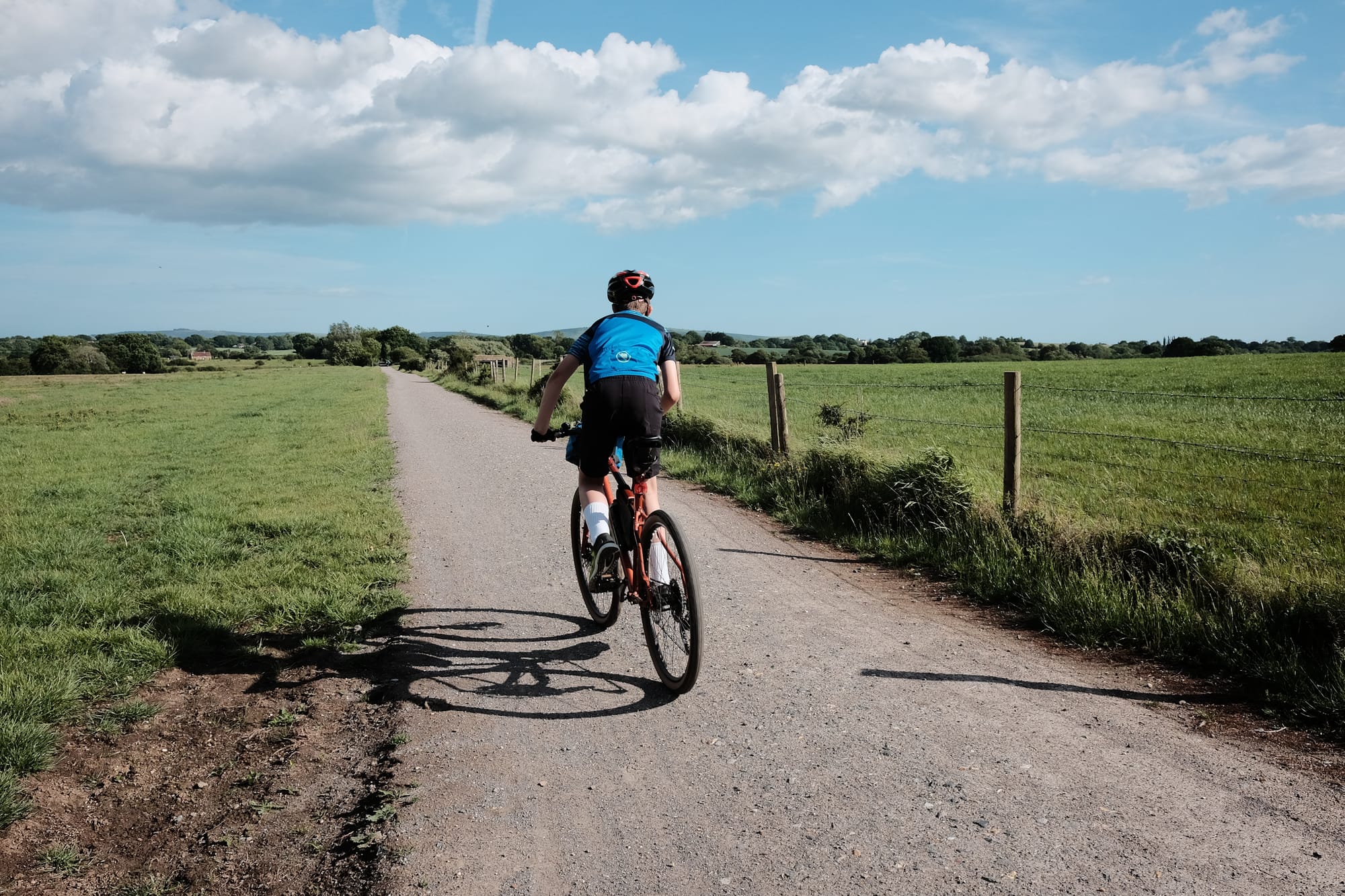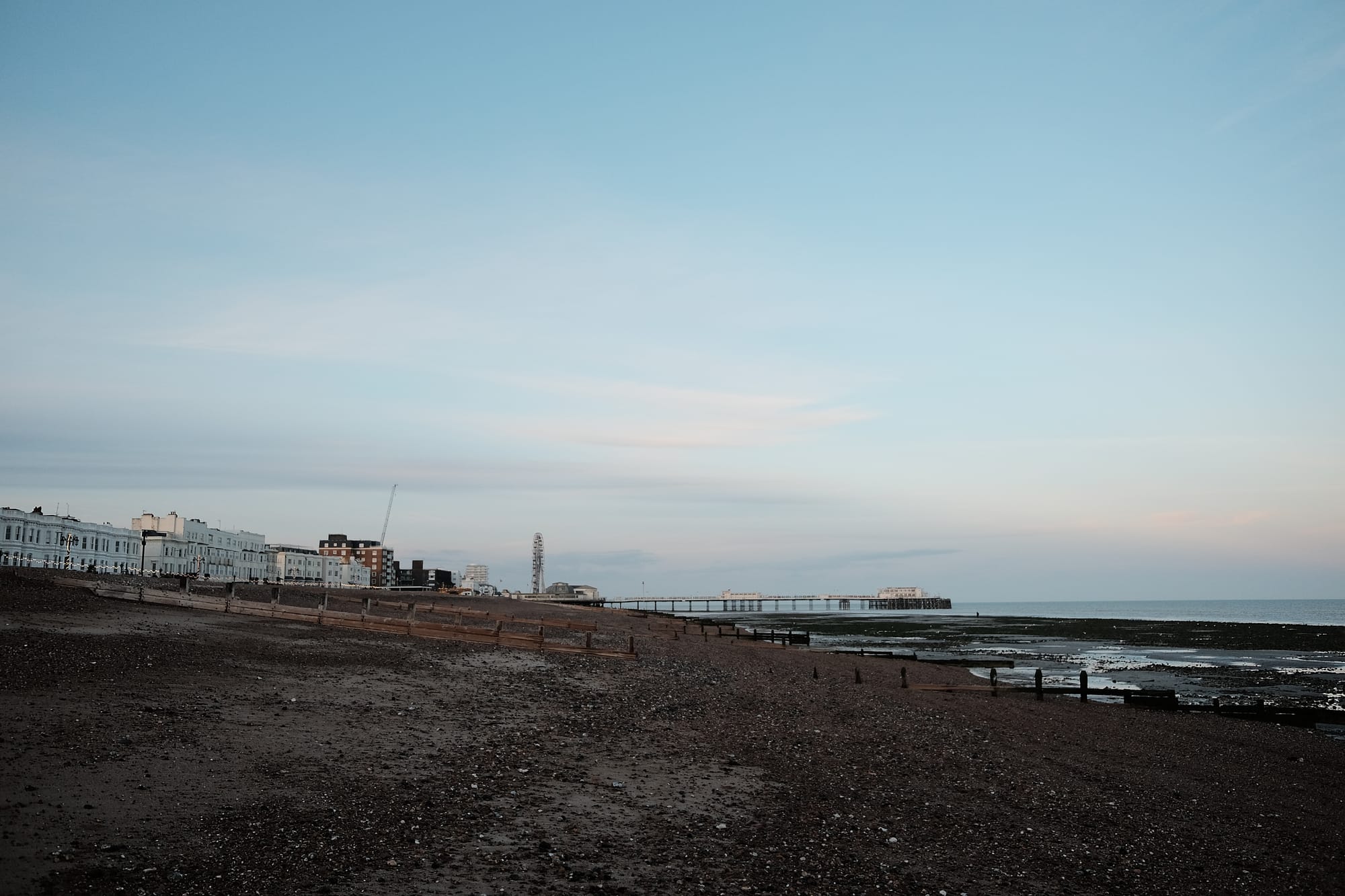Ride to the sea
Why, at the end of a long day in half term, did we find ourselves cycling into a brutal headwind on the south coast?

There’s something magical about travelling seawards – reaching the very edge of the country, dipping your toes in the water and contemplating what lies beyond. Cycling is perfect for a journey like this. It enables you to travel far but absorb your surroundings, dawdle along or delight in more rapid progress. You’re in complete control of your destiny, of getting yourself to your destination.
At half term, we rode to the sea as a family. Making use of the Downs Link, our route took us from the outskirts of Guildford to the coast at Shoreham-by-Sea and then along the seafront to Worthing, where we rested up before returning the next day. Nearly all off road, the Downs Link follows the course of old railways – the Cranleigh Line and the Steyning Line – that were closed in the 1960s. Our little family train of cyclists pedalled along the trackbed for over 60km each way across the Surrey Hills, the Low Weald, the South Downs and the coastal plain.
We passed old railway stations and sections of the partially restored Wey and Arun Canal, which closed in the early 1870s when the railways overtook it. Near towns and villages, the path busied with other people cycling and walking, untroubled by traffic. It’s a glorious way of getting around. And it reminded me that there was once a plan for the UK’s new high speed railway, HS2, to have an accompanying cycle path. Despite calculations that it would pay back much more for each £1 spent than the railway itself, the cycle path plan was scrapped.

Of course, even riding the flattest cycle path is harder work than taking the train or catching the bus – especially with luggage. On the one really steep section of the Downs Link, a detour over the abandoned Baynards tunnel, we encountered two cycle tourists laden with camping gear. They got off their bikes and pushed, but even that looked tough and we left them inching their way forwards. We were loaded lighter, but we had our own struggle when we reached Shoreham-by-Sea and turned west along the coast.
I’d been looking forward to this section of the ride: pedalling along the seafront cycle path in the afternoon sun. But I had reckoned without the prevailing wind, which blew stubbornly in our faces and tried hard to halt our progress. I followed a jogger for a long stretch of the route, unable to muster enough speed to overtake. We were tired and hungry, desperate for a glimpse of the hotel, hoping that the GPS device was wrong and that our bed for the night didn’t lie a few kilometres further on.
When the hotel finally came, we dragged ourselves gratefully through its doors, exhausted. But fatigue and frustration slowly turned to satisfaction. The salt and sweat of those hard final kilometres washed away in the shower. And by the time we’d demolished a dinner of pizza and burgers, and were tucked up in our beds, we were feeling good.

But why did we battle into that headwind in the first place? Why didn’t we just pop our bikes on the train that runs between Shoreham-by-Sea and Worthing? We’d have been there in minutes. It’s because the point wasn’t to get to the hotel, it was to get there by cycling. Overcoming problems along the way might not always be fun at the time, but it builds longer-lasting wellbeing.
Unfortunately, we’re conditioned as a society to demand instant gratification in everything we do. That includes encouraging people to consume travel in the easiest possible way, turning the experience into a depthless pastiche of someone else’s social media feed. Like junk food, it’s supposed to make us happy but it just leaves us feeling empty.
The good news is that resisting the insidious influence of capitalism is easy: all you have to do is ride into a headwind or walk through the rain. To paraphrase the great French cyclist Richard Virenque, you’ll feel the pain but you’ll be glad you’re there.

